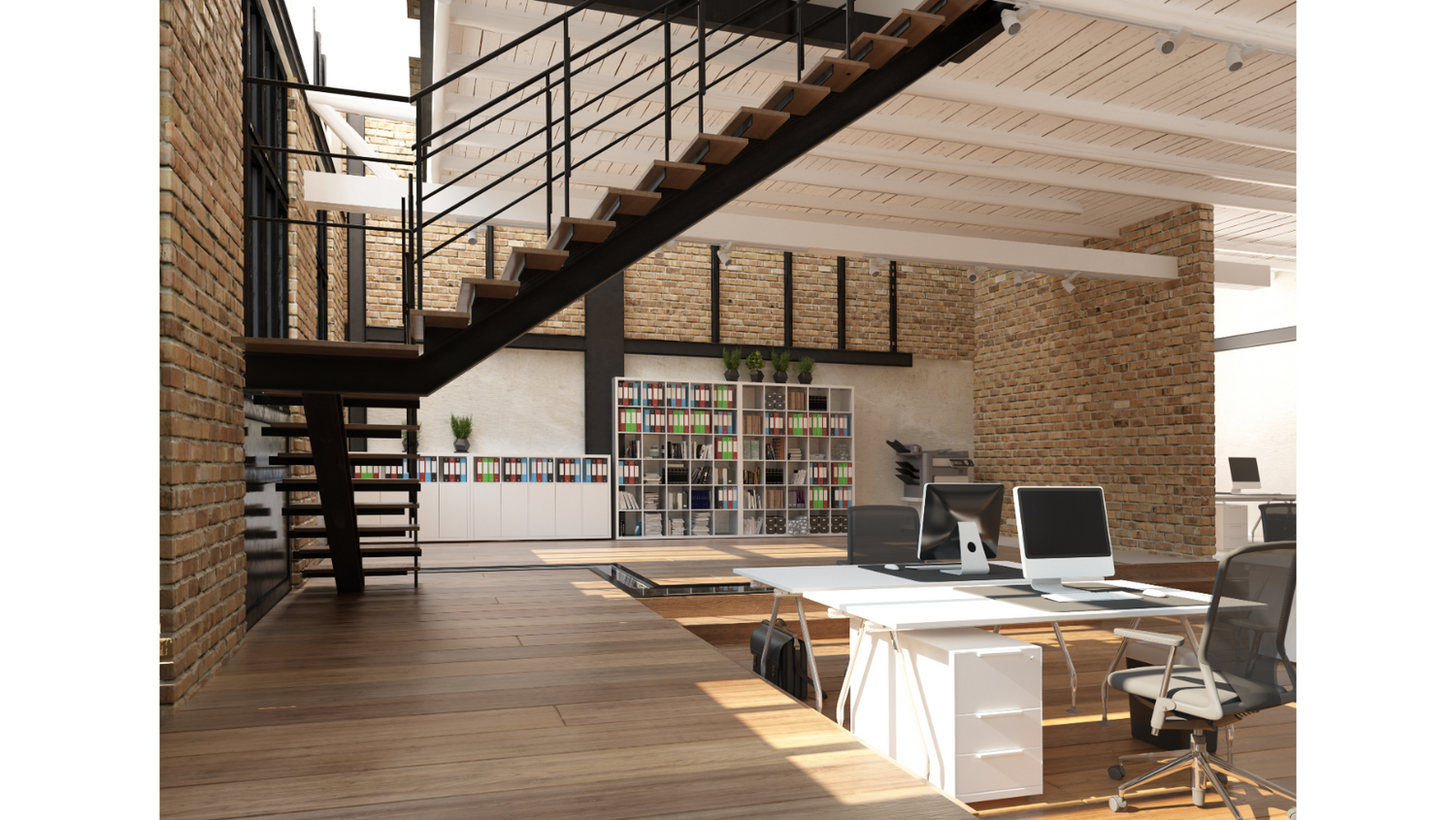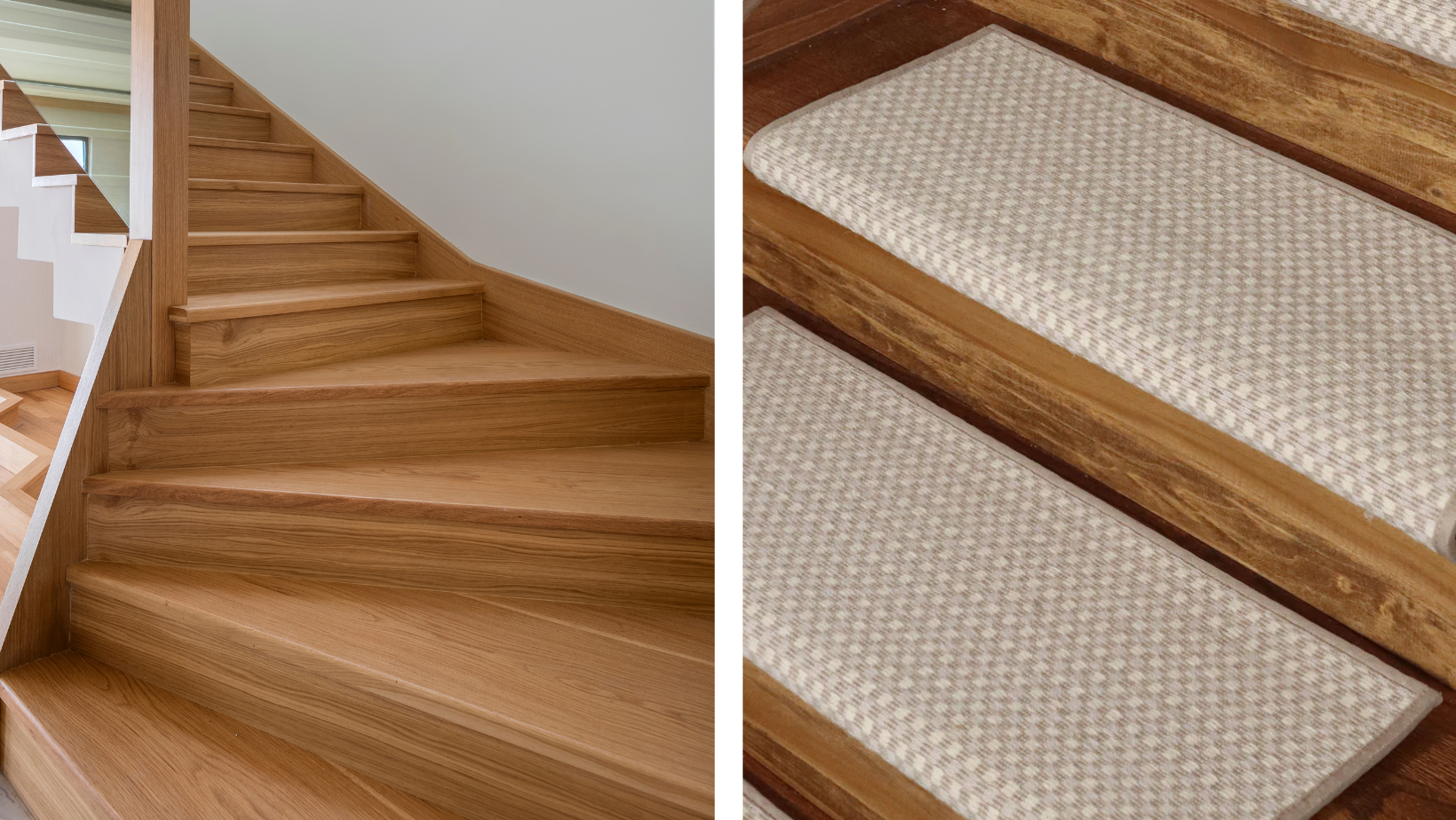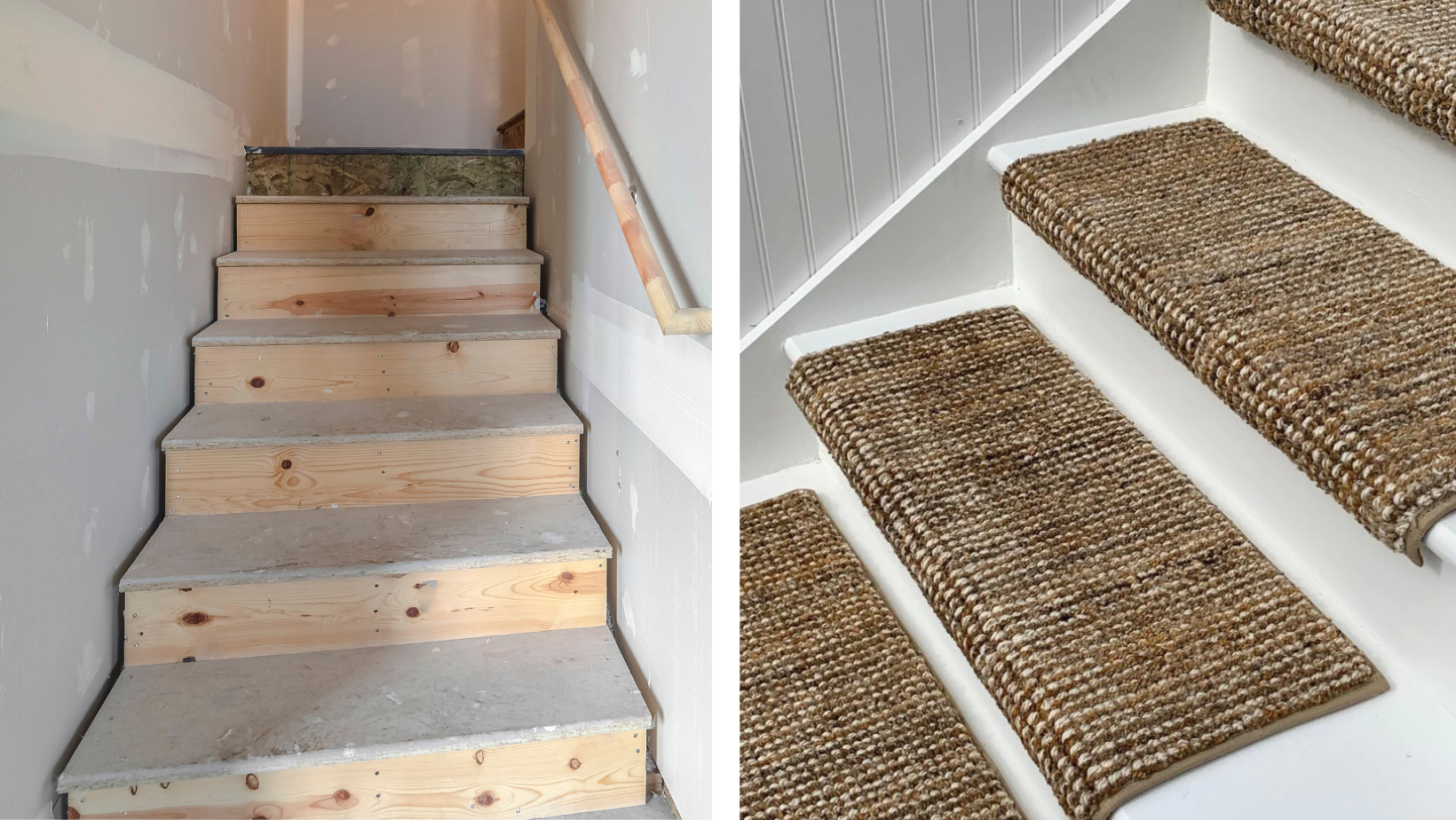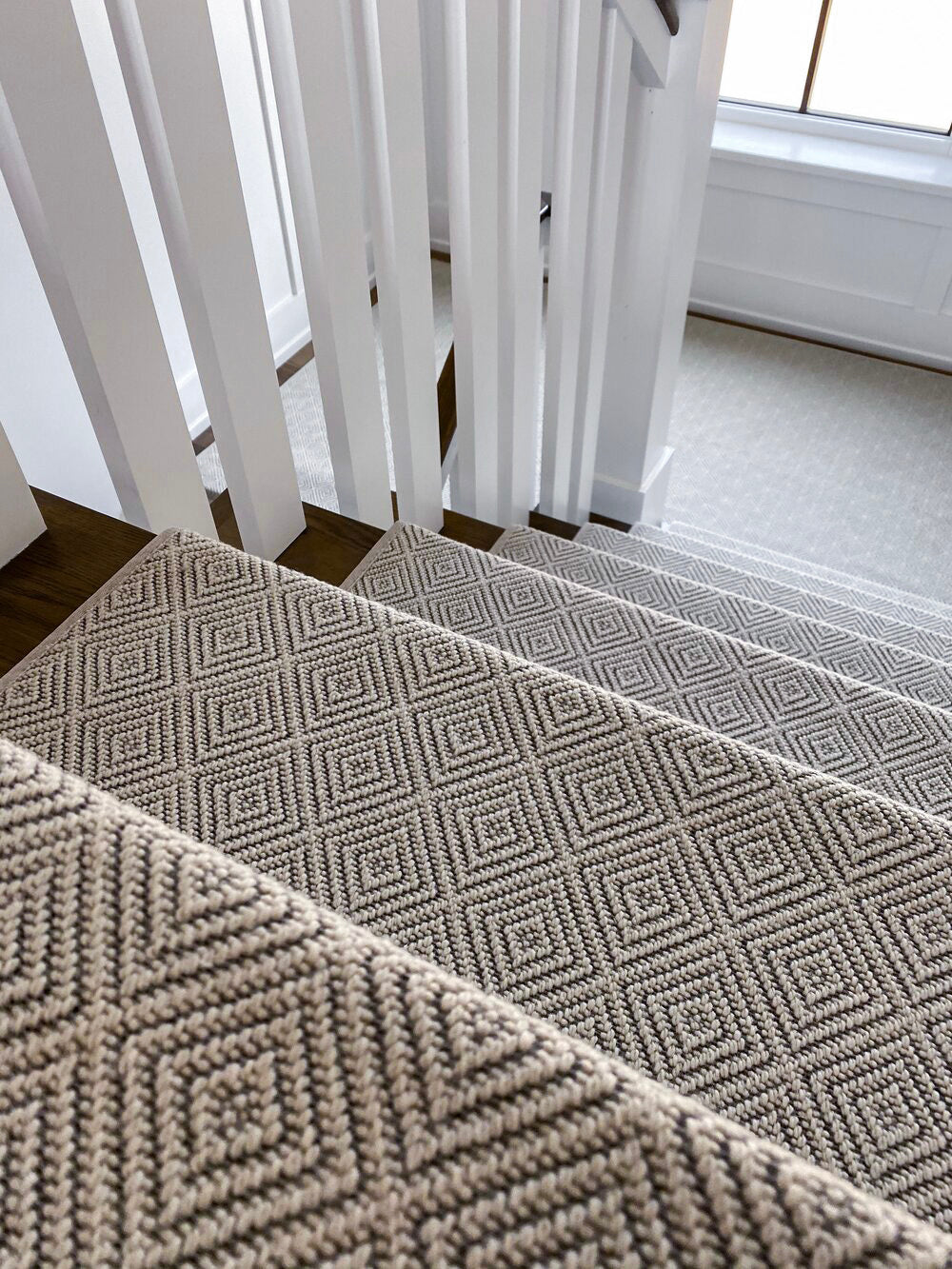Tight turns, narrow steps, and hard-to-move furniture—spiral stairs might save space, but they often sacrifice comfort and safety.
Upgrading spiral stairs to standard stairs creates a dramatic difference in usability, style, and accessibility, offering a more open layout and a safer, more practical solution for everyday living.
If your home upgrade includes this transformation, it’s also the perfect time to consider updating your carpet stair treads to fit your new staircase design.
In this guide, you'll learn exactly what changes—visually and functionally—when swapping spiral for standard stairs.
We’ll explore key differences in layout, safety, materials, and installation considerations, including tread upgrades.
Whether you're planning a remodel or simply weighing your options, this guide walks you through the full before-and-after experience.
Why Homeowners Are Making the Switch
Spiral stairs have long been favored for tight spaces.
Their compact footprint makes them useful in small homes, lofts, and especially basements.
But that same feature often turns into a problem.
You can't safely carry laundry, navigate with kids, or move heavy furniture without risk.
The steps are narrow, the turns are tight, and the slope is steep.
As families grow or accessibility becomes a concern, more homeowners start searching for a better solution.
That’s where straight stairs come in.
They offer safety, simplicity, and style—all without the awkward maneuvering.
Before and After: What Really Changes
Let’s break down what changes when you go from a spiral staircase to a standard one.
Before
-
Tighter, more vertical movement
-
Hard to navigate with pets or children
-
Difficult to carry boxes, bins, or furniture
-
Minimal design flexibility
-
Can look out of place in modern homes
After
-
Smooth, natural transition between floors
-
Safer for everyone, especially kids and the elderly
-
Easier to move objects between levels
-
More room for design touches like stair treads and handrails
-
Matches broader home styles and finishes
This transformation isn't just about function—it also gives you more creative control.
You can pick materials, install stair runners or carpet treads, and even add storage beneath.
Understanding the Impact on Stair Location and Layout
Switching to normal stairs may affect more than just the look of your home—it could influence how rooms are arranged.
A spiral staircase tends to tuck away into a corner.
But a straight stair layout stretches out, opening up the space.
You might find that removing a spiral staircase makes a cramped room feel more open—even if you're technically using more floor space.
If you're updating a basement, this becomes especially important.
The difference between spiral and straight in basement stairs before and after projects is massive.
Before the update, you’re dealing with tight turns and poor lighting.
After, a well-lit straight stairway makes the basement feel like part of the home, not a separate level.
You can also finally bring in that sectional sofa without hiring movers to take it through a window.
A Look at Wood Stairs Before and After Spiral Replacement
If you're moving from spiral to straight stairs and want to elevate the design, natural wood is a go-to material.
But what does that look like?
The contrast between spiral metal stairs and wood stairs before and after is dramatic.
Before, spiral stairs often feel cold, industrial, or purely functional.
After the switch, wood stairs add warmth and texture.
Oak, maple, or hickory can bring a rich finish that complements your flooring and railings.
Add in custom stair treads from Oak Valley Designs and the transformation goes even further.
Not only does the wood bring beauty, but it becomes easier to walk on—especially when paired with soft, padded coverings.
Making the Switch: The Technical Side
Planning to replace your spiral staircase?
Here’s what to consider from a technical and construction standpoint.
1. Space requirements: You’ll need more horizontal space for straight stairs, especially if you're going for a full-length rise.
This might involve moving or removing walls.
2. Support structure: Straight stairs need a strong frame underneath. Your builder will likely assess joists and surrounding structures before starting work.
3. Code compliance: Check local building codes. Things like rise height, tread width, and railing placement are often strictly regulated.
4. Existing openings: If you're replacing stairs between floors, you'll need to cut or expand the stair opening in the floor above.
That’s why working with a contractor or structural engineer is often essential.
Once the base construction is in place, you’ll be ready for finish selections—and this is where design decisions really shine.
Selecting the Right Stair Treads After Replacing Spiral Stairs
Here’s a detail that often gets overlooked: stair coverings.
Most spiral stair coverings are custom-fit to the curve and shape of each step.
So when you replace them with straight stairs, those old coverings won’t work.
If your new staircase has straight treads, standard coverings won't always do either.
That’s why made-to-order stair treads are key.
Oak Valley Designs offers custom-cut stair treads with a variety of options, including:
-
Low-profile or padded styles for comfort
-
Solid color or patterned finishes
-
Materials like wool, nylon, or performance blends
-
Adhesive backing for easy, damage-free installation
Ordering a few swatches first lets you feel the texture and see how it plays against your new stairs.
This small detail makes a big difference—especially if you’re transitioning from slick metal spiral stairs to finished hardwood.
Budgeting for the Transition
Let’s talk about cost.
Replacing spiral stairs with standard stairs isn’t cheap, but it’s often more affordable than people think—especially when the project is planned well.
Your budget should cover:
-
Demolition of the old stairs
-
Structural assessment and any necessary changes
-
Installation of new stairs
-
Finishing materials like treads, risers, and railings
-
Custom stair tread coverings or runners
If you're redoing basement stairs before and after a full remodel, it's smart to budget for lighting and flooring upgrades as well.
Lighting becomes much more effective on straight staircases, and the right fixtures can completely transform the space.
Real-World Examples: Transforming the Feel of a Home
A family in New York replaced a narrow metal spiral staircase in their basement with solid oak straight stairs and custom treads from Oak Valley Designs.
The result?
The kids can safely run downstairs without the fear of slipping.
And what was once a chilly, industrial-looking lower level now feels like a second living room.
Another customer replaced a second-floor loft spiral staircase with straight stairs finished in maple and white risers.
Before, the staircase made the space feel blocked off.
After, the room opens up, inviting light and making the area feel twice as large.
Both homeowners agreed: once you experience normal stairs, you don’t miss the spiral.
What to Ask Yourself Before Starting the Project
Before taking the leap, ask yourself:
-
Am I trying to improve safety?
-
Do I need easier access for kids, elderly family, or pets?
-
Am I trying to make my home feel more open and connected?
-
Do I want my stairs to match the rest of my home’s style?
-
Will I regret skipping this upgrade in a few years?
If you answered yes to any of those, then this project is worth considering.
And remember, you don’t have to do it all at once.
Many customers start with a consultation, get their stair structure built, and come back later for their treads once they’ve settled on colors and materials.
Stepping It Up
Upgrading spiral stairs to standard stairs isn’t just a visual transformation—it’s a shift in how your home functions.
It’s about reclaiming space, increasing safety, and elevating the way you live.
From basement upgrades to main floor overhauls, this one change opens the door to countless design possibilities.
And when it’s time to finish the project, Oak Valley Designs offers stair treads that complete the look with comfort and confidence.
We’re here to help every step of the way—from swatch samples to custom orders built to fit your new staircase.
Reach out today and discover a better way to step up.
-
Website: https://oakvalleydesigns.com/
-
Phone: 706.331.0315
-
Email: info@oakvalleydesigns.com
-
Address: 30 River Ct SW Bldg E Cartersville, Ga 30120




